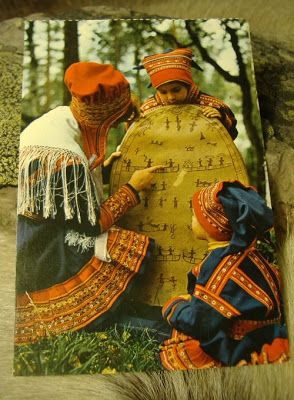
History of the Medicine Drum
Medicine drums, Sami drums, frame drums, ritual drums and
ceremonial drums are used all over the world. The sacred process of creating your own
Medicine Drum is honoured through deep gratitude, respect and reverence for the
connection to all living things.
Each drum has their origins in shamanic or medicinal practices, ritual practices, battle needs or even communication needs. In shamanic traditions, the drum is used to call the spirits and to facilitate the transition of the shaman, via a trance state, to the other realms for the purpose of mediation and healing. Often referred to as the Shaman’s Horse, the drum and its beat are what the shaman “rides” between the physical and spiritual worlds when she is journeying.
The medicine drum is a shamanic tool used for healing and transformation since ancient times. Drumming has the power to synchronise brain hemispheres and create altered states of consciousness in which healing and wisdom from the higher self can be obtained.
The drum echoes the heartbeat of the Earth and enables us to connect with the rhythm of life. Studies have shown that the Earth vibrates at a frequency of 7.8 – 12 cycles per second. The drum has a frequency of 7 – 14 cycles per second so when we listen to a drum beat we are aligning ourselves with the earth’s vibration. Each time we beat the drum we send out healing vibrations to the Earth. The indigenous people of North America call the drumbeat the heartbeat of the Earth and believe that through the drum we can feel the heartbeat of the Earth.
Within The Shamanic Drum – a guide to sacred drumming, Michael Drake describes the different beat patterns of the drum and their effects and explains how drumming synchronises the hemispheres of the brain, resulting in a sense of balance that creates the knowing of what to do (next).

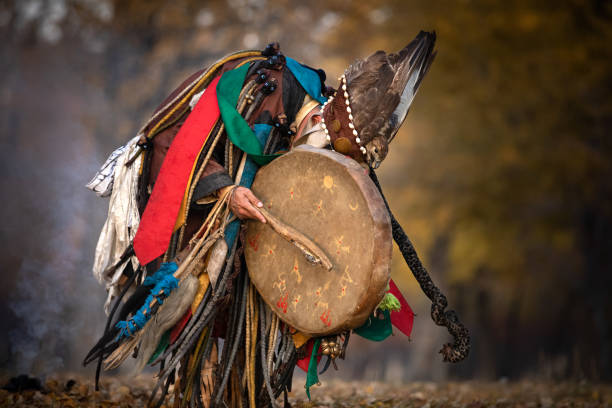

Sacred Trees
Yggdrasil - Tree of Life
Tree Spirits
Sacred Sites
Mount Kailash & Lake Mansarovar located in Tibet. This mountain is a holy place for three religions – Hinduism, Buddhism & Jainism.
The abode of Shiva is in Mount Kailash, and the smashana, the cremation ground. Kailash means ‘where there is only celebration’, and smashana is where there is only void. Divinity dwells in the void as well as in celebration. And in you there is void, there is a celebration. - An excerpt from Gurudev’s talk on Lord Shiva
In Hinduism, it is believed that taking a dip in the Kailash Mansarovar or drinking the water washes away all the sins.According to Jains, the lake is believed to be the place where Lord Rishabh Deva, the first Tirthankara attained spiritual liberation.
According to Buddhism, Mount Kailash is also known as Meru Parvat and it is considered to be the place where Lord Buddha stayed and meditated.According to Bon Religion, "Zhang Zhung" is a holy place in Tibet.
It is believed that the founder of Bon religion Tonapa Shernab visited Tibet for the first time and took a bath in this lake.According to Sikhism, the lake is believed to be the place where Guru Nanak Dev, the founder of Sikhism and the first of the 10 Sikh Gurus learned to meditate.
Source: Art of living org

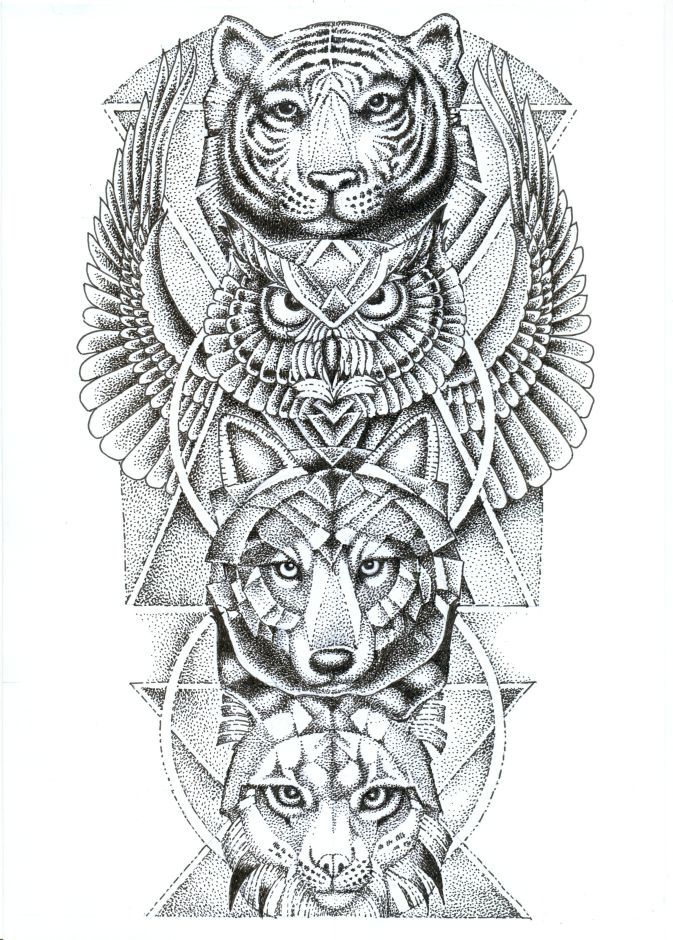
What is a Totem Animal?
A “Totem Animal” is an animal spirit that you call upon or invoke as an individual or a tribe, for its special powers and survival skills, to serve as a guardian or protector when facing adversity.
Often indigenous tribes from many different cultures felt a kinship or spiritual relationship to an animal spirit which then became the Totem animal. Totem animals were often the animals that inhabited the local area, and which had a unique relationship to the tribe and its heritage.
The “spiritual powers” of the various totems aided each tribe to carry out its own special duties and responsibilities within the tribe in accordance with the attributes of that totem, for example the Keepers of Wisdom for those whose totem animal was a turtle.

What is a Spirit Animal?
A “Spirit Animal” is the one who will present life’s lessons. It is the one who comes to you in order to show you, through its own unique nature and skills, how to deal with the manifestations of your Spiritual Journey.
Spirit Animals do not necessarily guide you, but they come to teach you that which you need to learn, in order to know how meet the challenges of your journey.
Each Spirit Animal has certain powers and skills to teach and certain knowledge to share, for each Spirit Animal has its own methods of overcoming the many challenges it must meet in order to survive. Pay attention to the repeated appearance of this animal and of repeated patterns or themes. Do not let your perceived image of the animal prejudice you as to the significance of its message.
You will meet with the Spirit Animal whose lesson you need to learn. You do not choose your Spirit Animal, it chooses you. Do not try to “compel” your Spirit Animal to manifest itself just because you want it to. True Spirit Animals will appear only at the time and place in your life when you are ready to accept them and the wisdom the come to offer.
And … they always turn up at exactly the right moment.
Pay Attention!!
Archetypes - What Story are you Living?
Michelle Niethe
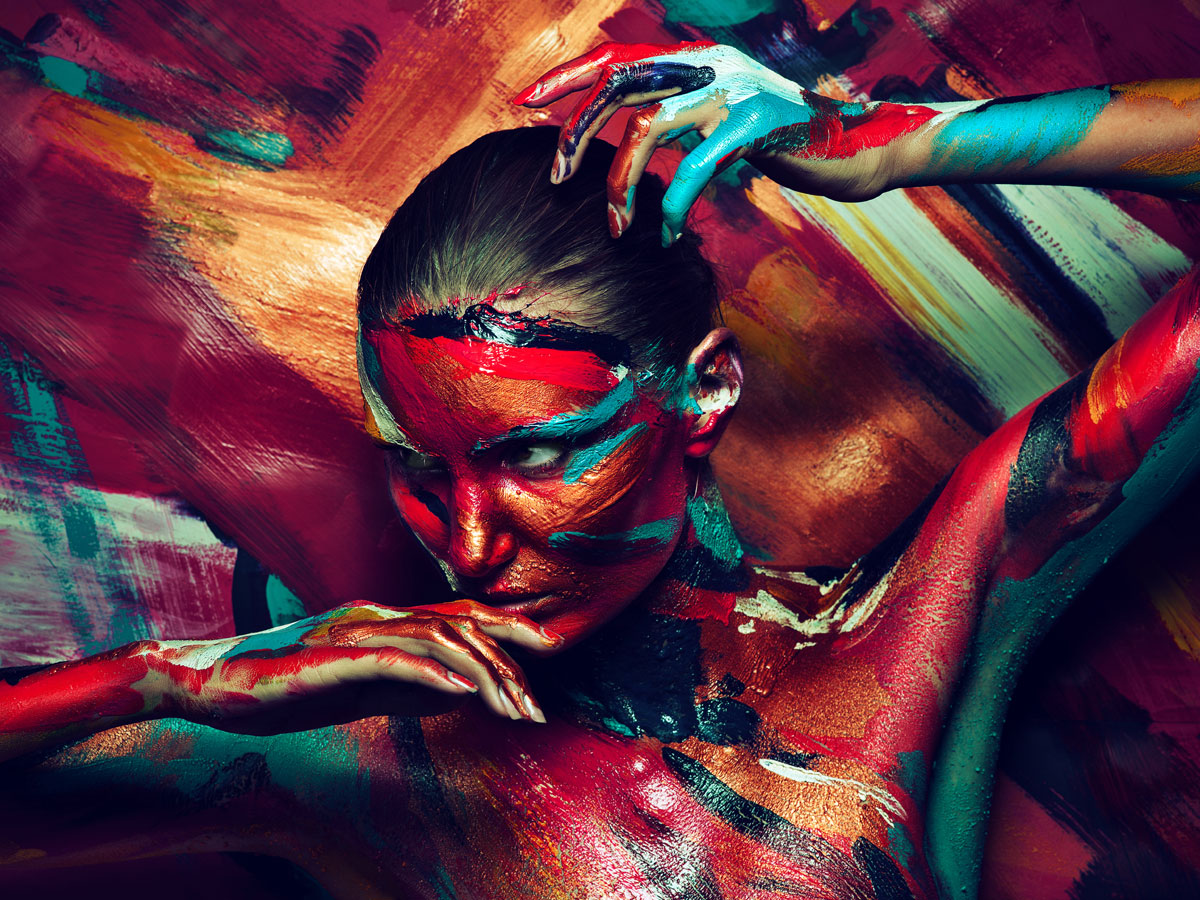
Mea Hui – Who Am I?
I am granddaughter of Rocky River Mountain
Hearth fire woman
Gentle eagle warrior woman
I carry the heart of two bears
I am healer, herbal woman
A light-bringer, I also walk in shadows
My ancestors are drovers, shearers and stone masons
Walking between many worlds, I walk to the beat of my own drum
This is just a glimpse of my Archetypes, my story. What is your story? How do you present and introduce yourself to the world? Where have you come from? Where are you heading?
Modern society has lost its soul connection with the natural and spiritual world, creating a dehumanising wound and encouraging collective trauma.
The root of this trauma and crisis isn’t just human behaviour, but also the tilted Cartesian[2] conception that matter and the natural world are dead and without spiritual importance and belief that soul is only found within humans and not out in the world.
Reality is a series of metaphors set into motion by the synchronicity of Archetypes we experience. We live entirely in a world of deep Archetypes and universal symbols that evoke deep and sometimes unconscious responses in each person. Archetypes are visual symbols or energetic imprints that exist in our psyches. Some are readily understood, while others bring subconscious messages that help trigger memory of why you are here and the truth behind the illusion of reality.
Everything that is manifest, yourself, everything in your world, your thoughts, the universe, the past and the future - all these things are understood as expressions of consciousness. Through this and by using shamanic practice, we have a means to explore the entirety of life and experience - by understanding the Archetype manifesting in you, guiding, inspiring and initiating you on the path of healing and spiritual evolution. When we deny our Archetypes (positive or negative) we are rejecting connection to our soul.
Life is made up of endless symbols and Archetypes that aid us in shaping and forming our individual world. We are the ones who give meaning to symbols, as they are the truth that each person’s consciousness perceives them, acting to trigger responses within our subconscious, and influence personal development and inner healing. Archetypes can be described as blueprints of our souls.
We are all the Archetypes because we embody the essence of all the Archetypes within us[3].
Archetypes influence our communication and can be used as catalysts towards our own power of awakening. Like written language, Archetypes carry with them a deep meaning that lies in the base of our subconscious that allows us to communicate with each other and within ourselves.
Archetypes are symbolic universal roles or masks that contain energy vibrations and patterns that either expend or enhance energy.
Heather Price describes it perfectly,
When you know yourself well, without the blinkers and masks that shield you from having to step up and be seen, shadow parts of self – warts – and all, you can truly walk consciously and confidently in the world.[1]
Individual and universal archetypes are found everywhere, as symbols are a language of the mind, taken to different frequencies of thought and connected to each other by the collective unconsciousness. We become aware of them in meditation, dreamtime, remote viewing or other out-of-body experiences. They also become evident during daily life, by reading a book, watching a movie or interacting with others. Archetypes are archaic images or universal thought-forms that influence the feelings and action of an individual.
Carl Jung proposed that these images, patterns or prototypes for ideas are primordial images or patterns of behaviour that we are born with and are derived from the universal or collective unconscious. According to Jung, the collective unconscious (also known as the Grids, Akashic Records, Sea of Consciousness) that which creates our reality[4]), is an inherited psyche or reservoir of experience and is common to all members of a specific species.
Jung identified four major Archetypes, but also believed that there was no limit to the number that may exist. According to Jung, there is no fixed number of Archetypes and may even overlap, appearing in the same person. The following outlines some primary Archetypes:
The Self
This Archetype represents the wholeness of an individual that is brought about by the unification of the consciousness and the unconsciousness. The self is created by the integration of all aspects of the personality. The self and other Archetypes cannot exist without each other.
The self is an Archetype that represents the unified unconsciousness and consciousness of an individual.
Creating the self occurs through a process known as individuation, in which the various aspects of personality are integrated. Jung often represented the self as a circle, square, or mandala.
The Shadow
This is the dark, wild and unknown side of the psyche. It represents the traits that lie deep within, hidden from routine daily life and is comprised of repressed desires and ideas and weaknesses/ shortcomings.
The shadow can appear in dreams or visions and may take a variety of forms. It might appear as a snake, a monster, a demon, a dragon, or some other dark, wild or exotic figure.
The Syzygy (the Divine Couple)
The Anima and Animus
The Anima represents femininity, the feminine aspect within the male psyche, while the Animus represents the male aspect within the female psyche. The anima and animus help improve the relationship between men and women by allowing them to understand & communicate with members of the opposite sex. The combination of the two is called The Syzygy (the divine couple).
The Wise Old Man
This Archetype represents knowledge, wisdom and spiritual insight. It seeks to offer protection, guidance and mentoring.
The Rebel
Also known as The Outlaw, this is the revolutionary, the iconoclast or the misfit who is strongly inclined to break rules and overturn, destroy or disrupt whatever is not going their way. The radical views and outrageous behaviour bring along a weakness that may lead one to the dark side and push into crime.
The Rebel’s greatest fear is of becoming ineffectual and powerless and they are driven by the core desires of revolting and taking revenge.
The Outcast
The outcast is just that. He or she has been cast out of a society or has left it on a voluntary basis.
The outcast figure can oftentimes be considered as a Christ figure.
The Star-Crossed Lovers
This is the young couple joined by love but unexpectedly parted by fate, such as Romeo and Juliet.
Any attempt to give an exhaustive list of the Archetypes, however, would be a largely futile exercise, since the Archetypes tend to combine with each other and interchange qualities making it difficult to decide where one Archetype stops, and another begins.
When you realise which Archetype dominates your personality and that of others (friends, co-workers and loved ones), you get a deeper insight into motivations and behaviours and can connect with them or yourself better.
Archetypes help you interpret the larger meaning of life and the changes that shape it. The totality of human experiences that your deeper mind carries enables you to face life’s challenges.
Where do Archetypes come from then? The collective unconscious, as Jung believed? From our ancestors? From books or movies? He suggested that these models are innate, universal, and hereditary. Archetypes are unlearned and function to organise how we experience certain things. There is a belief that we inherit these Archetypes much the way we inherit instinctive patterns of behaviour.
All the most powerful ideas in history go back to Archetypes
Jung explained in his book The Structure of the Psyche[5].
For it is the function of consciousness, not only to recognise and assimilate the external world through the gateway of the senses but to translate into visible reality the world within us.
Archetypes symbolise basic human motivations, values, and personalities and play a role in our personality. The actual way in which an Archetype is expressed or realised depends upon several factors, including an individual's cultural influences and unique personal experiences[6].
So, once you get an answer is it in the form of a story or a metaphor or even a sensation or a smell? It is meant to convey something, usually not literally.
When you ask a question in an inner journey, the purpose of the answer is not only to give you a deeper understanding, but it is also meant to shift you into a new direction. Sometimes, you get an answer that makes no sense to you and one day what it means becomes clear. Sometimes, the answer may never be clear to you. By identifying the Archetype that best represents you, the answer can be clearer. It speaks to this deeper part of yourself. This part of you knows what the archetype means in a quiet way. Once that part of you receives the information, shifts can occur at this deeper level.
When you practice Mea Hui, it is important to realise you can do this in two ways, with from the perspective of the Wounded Heart, or from a wiser place – that of the True-Heart Self. While looking through the Wounded Heart eyes, we may identify Archetypes that have drained us energetically (and may be still doing this).
Examples of True and Wounded Archetypes:
True Heart
Nature’s Child, Blessed Child, Beloved Child, Golden Child, The Innocent Chid, Loved Child, Spirited Child
The Peaceful Warrior, The Spiritual Warrior, The Quester or Visionary, The Obedient Soldier, The Hero
Emperor, Queen, King, Knight of the Round Table, Leader
Soul Mate, Compassionate Lover, Tender Lover, Faithful Partner
Advocate, Attorney, Defender, Legislator, Lobbyist, Environmentalist, Role Model
Wounded Heart
The Abandoned Child, The Rejected Child, The Betrayed Child, The Shamed Child, The Controlled Child
The Tyrant, The Rebel Fighter, Wounded Warrior, The Coward, The Destroyer, Damsel in Distress
Servant Leader, Conqueror, Dictator, Slaver, The Ruler
Jilted Lover, Scorned Woman, Divorcee, Rejected Suitor
Prosecutor, Judge, Persecuted Soul, Vigilante
As you read, these, notice which one(s) evoke a deep emotion. Are they from the side of the true heart or wounded heart?
Archetypes are the secret forces behind our behaviour, as they reside in the unconscious—the part of our minds we aren’t aware of—they influence us without us knowing it. When you can observe an archetype operating within you - you have differentiated yourself from the Archetype. Once you have identified the Archetype, you can separate yourself from it and it is less likely to influence your behaviour in harmful ways.
When we choose to search out the light archetypal energies through the True-Heart, and journey into soul consciousness, we can establish and reclaim Archetypes that raise our vibration constantly.
By focussing on certain Archetypes that serve you, you may find that starts to impact you in a very powerful way. Archetypal energy is all everywhere, operating at different frequencies.
Look at the energy of the True Heart Archetype and allow some of that to come through you if it's something positive, increasing the positive vibration of the archetypal energy. Once this is switched on the vibrations will have a profound effect on the DNA, manifesting change.
Conversely, be aware of what Archetypes might be running your life, their frequency. Choose to let those go. Choose to see that they served you for a period and then simply choose to bring through an energy that is more authentic to you. Once identified, start to see what attributes you may want and then think of Archetypes that could bring through those energies.
The use of Shamanic tools, such as mandalas, inner journey, art therapy and ancestral journeys can all be used to tune in to and alter your Archetypes’ energy.
Remember - The True Heart turns to the Ancestors (the ones who walked the way we aspire to walk) to activate cellular memories within us to guide us and allows to drop the veils and to tell transitional stories that uplift and illuminate1.
References
[1]Shamanic Path and Practice - Healing Archetypal and Ancestral Imprints, Heather Price
[2] Cartesian Conception of the Mind, René Descartes
[3]The Awakened State, https://theawakenedstate.net/symbolism-and-archetypes/
[4]Ancient-Symbols, https://www.ancient-symbols.com/
[5] The Structure and Dynamics of they Psyche, C. G Jung
[6] The Four Major Jungian Archetypes, Kendra Cherry